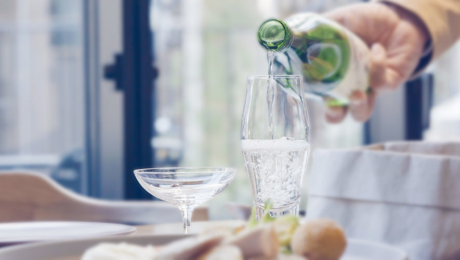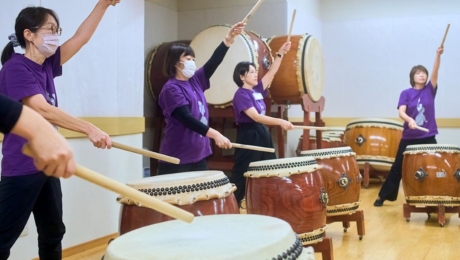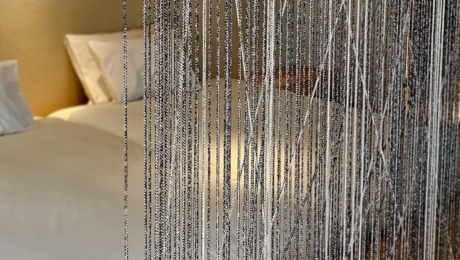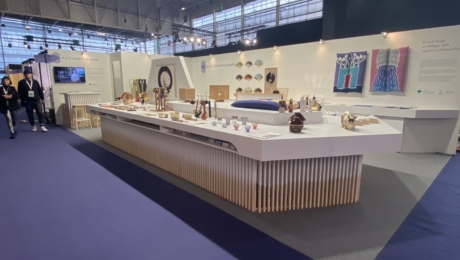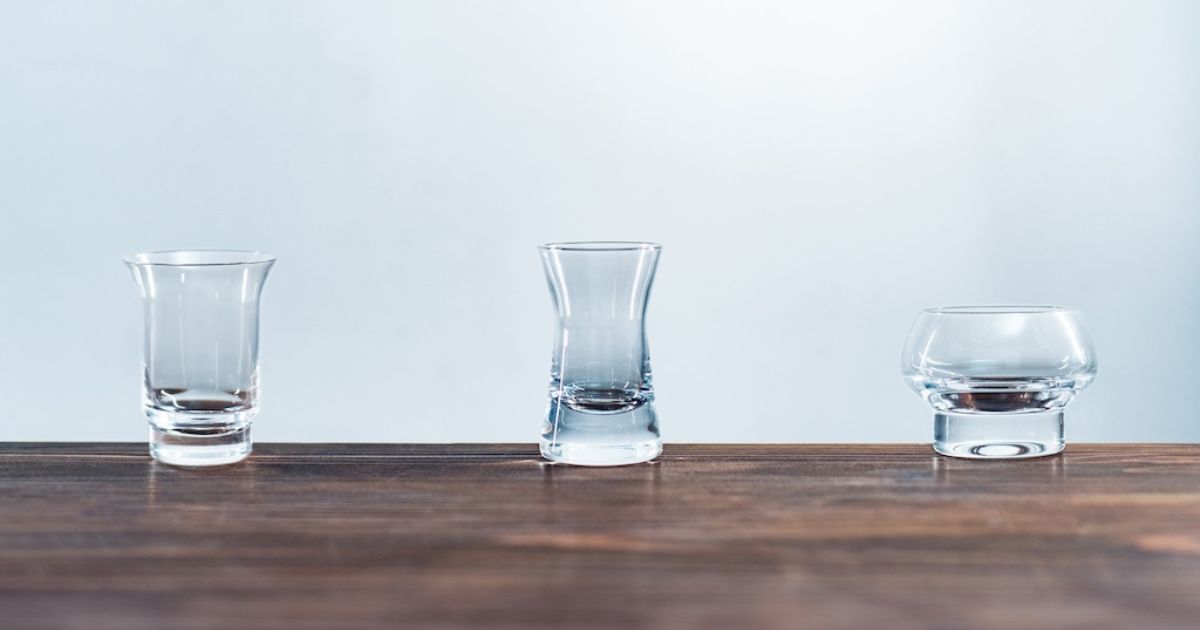
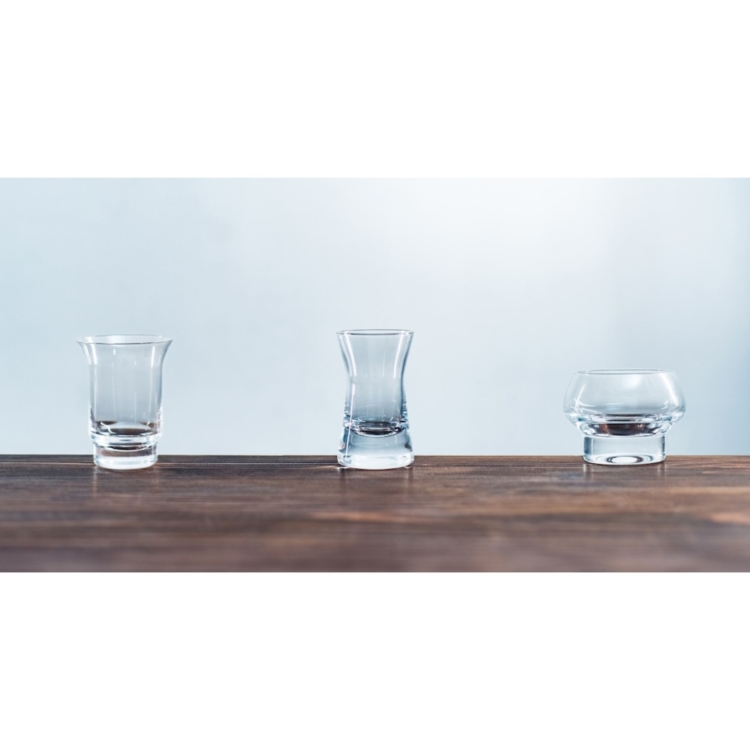
Kimoto Glass Tokyo: Sake, Transformed
2024.08.30
LIFEAs a leading producer of glass tableware, Kimoto Glass Tokyo collaborates with creators from Japan and abroad to craft innovative glass designs. Driven by the concept of adapting glassware to sake’s taste and aroma, as with wine, the company has focused intensely on developing sake glasses in recent years. With over 130 designs now on the market, Kimoto glassware is sold in more than 20 countries.
This summer, Kimoto Glass Tokyo has expanded its collection of sake glasses with a new lineup created by a team of French designers. Named “SENS,” invoking the original French significance of “something meaningful,” the glasses are distinguished by their unique shape, inspired by French water towers—water being a crucial element in sake production.

Another striking feature is the thick, heavy base of the glasses. When held, they feel unusually substantial, almost defying their nature as glassware. This weight, when combined with the act of drinking sake, enhances the richness and depth of the flavors. According to Miho Aoki from the sales department, who oversaw the project, the SENS glasses are ideally paired with robust varieties such as Kimoto or Yamahai sake. Nevertheless, even crisp, dry sakes take on an intriguing new character when enjoyed from a SENS glass.
The “Ryote,” also of French design, also features a slightly thickened base. Interestingly, international designers who visit Tokyo glass studios often find themselves in awe of the clarity of the glass produced there. The thick base of the Ryote lineup is a testament to the beauty of that transparency, a result of the artisans’ exceptional craftsmanship and uncompromising selection of materials.
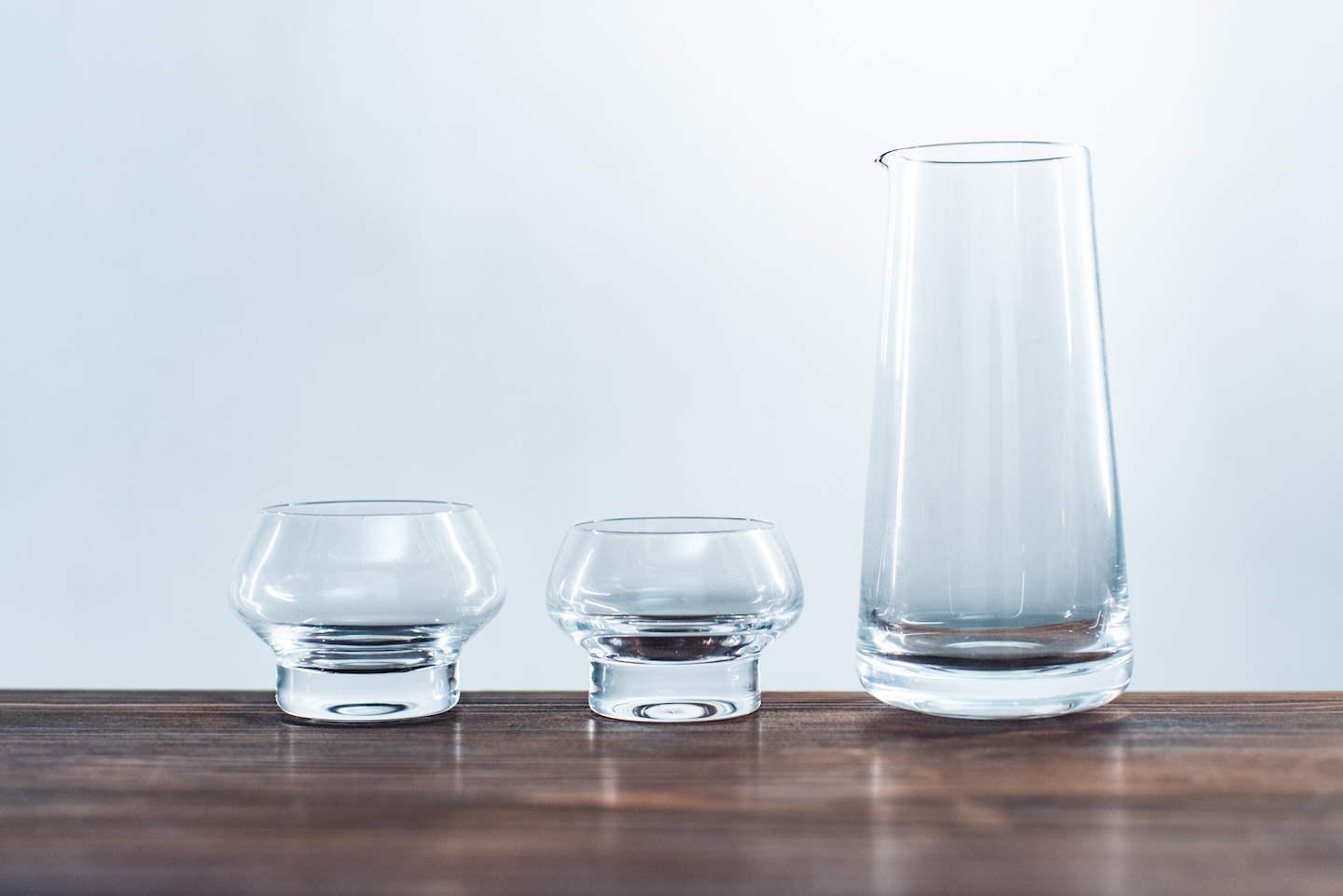
The name “Ryote” comes from the Japanese word for “both hands,” evoking the shape of cupped hands gathering water from a clear spring, which inspired the design. The glasses are also engineered to have a silhouette that becomes particularly striking when filled halfway with sake. With their wide mouth, these glasses allow sake’s inherent umami to spread across the entire palate, making them equally well-suited for Kimoto or Yamahai sakes.
In contrast, the “OPTICA” collection, designed by another French team, is ideal for enjoying crisp Ginjo sakes. The designer, who also works as a photographer, took inspiration from the shape of optical lenses. The wide opening of the glass allows the sake to flow smoothly into the mouth, spreading its flavors evenly across the tongue—a design that highlights the distinct, rich rice flavors characteristic of Ginjo sake.

Kimoto Glass Tokyo’s concept of choosing the right glass based on the type of sake is gaining traction, not just in restaurants, but also among sake breweries. Some breweries now visit Kimoto Glass Tokyo’s showroom with their sake to sample it from various glasses, searching for the perfect match that best expresses the flavors of their brew.
Moreover, Kimoto Glass Tokyo advocates for what they call “tripling,” adding the element of tableware to the pairing of food and drink. By selecting glassware based on the type, taste, and aroma of the sake, as well as its compatibility with the cuisine, they aim to elevate the overall dining experience and offer an even higher level of hospitality. This combination of dishware, sake, and food might just unlock flavors that have yet to be discovered…
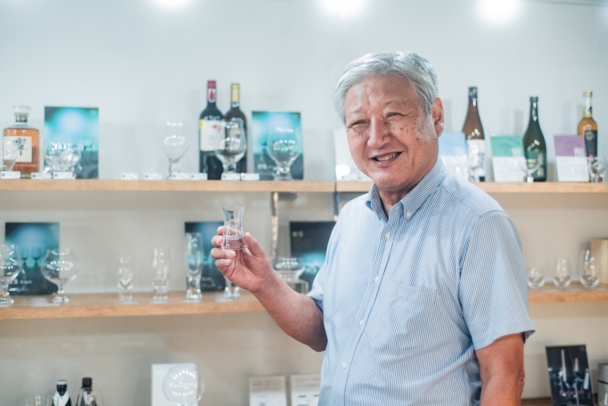
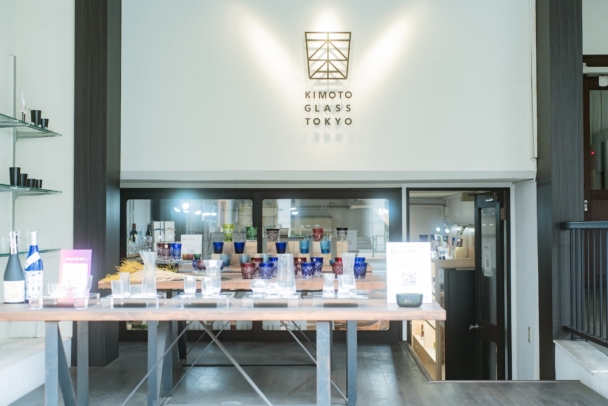
Sake is now a drink well-loved the world round, and its popularity is yet expected to grow, especially alongside the increasing influence of traditional Japanese cuisine (washoku), which has been recognized by UNESCO as an Intangible Cultural Heritage. Kimoto Glass Tokyo’s sake glasses are not only a medium capable of bringing out sake’s true taste and aroma, they are also a testament to the high level of Japanese glassmaking craftsmanship for the world to see and helping to preserve the Edo’s glassmaking traditions.


